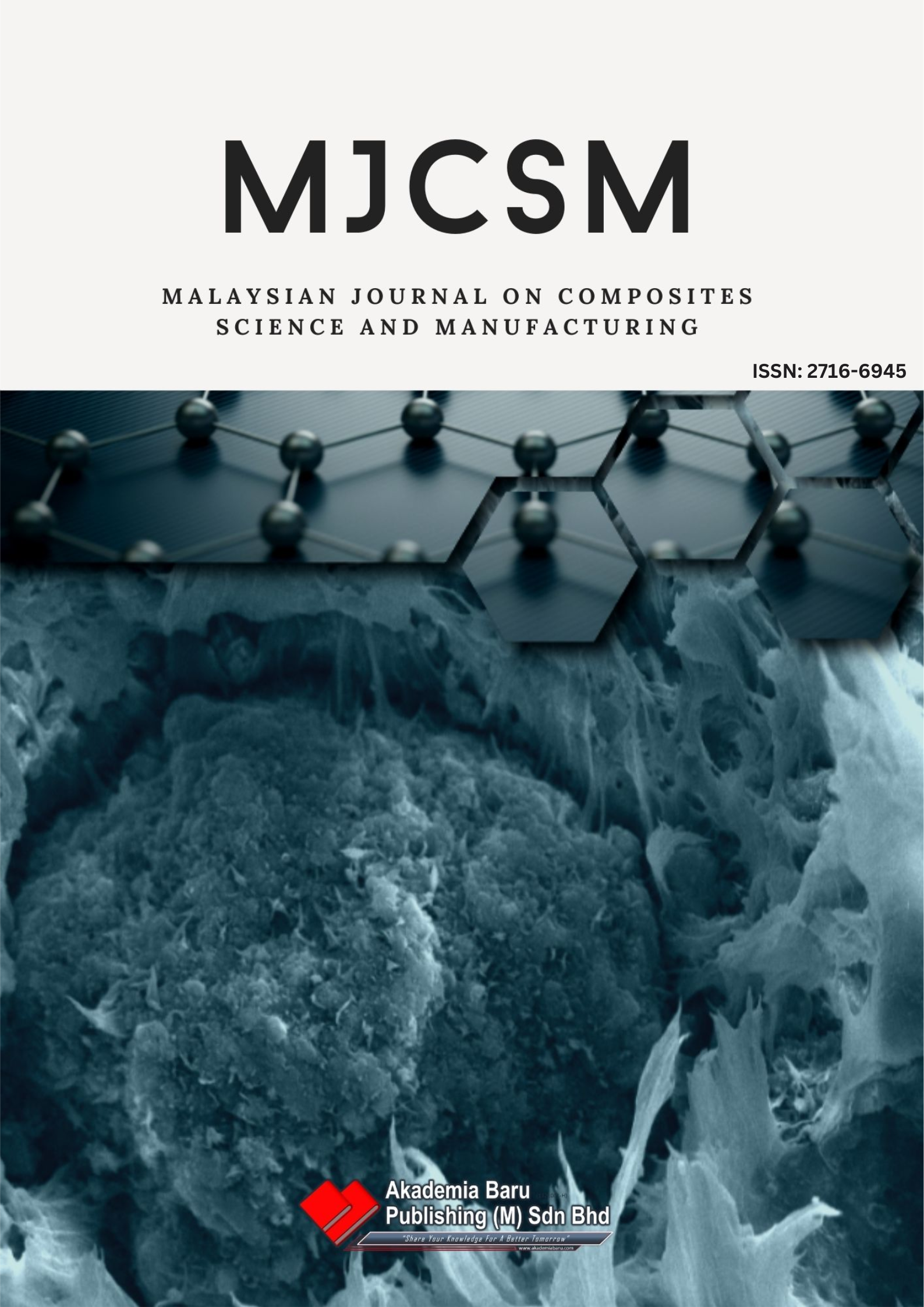Electrical Conductivity and Antenna Properties of Polyaniline filled GNPs Nanocomposites
DOI:
https://doi.org/10.37934/mjcsm.4.1.1127Keywords:
PANI/GNPs; polyaniline; graphene nanoplatelets; radiation patch; wearable antenna; wireless telecommunicationAbstract
This study was conducted to investigate the potential of utilizing conductive polymer nanocomposite for flexible type antenna application. The polyaniline (PANI) filled with graphene nanoplatelets (GNPs) nanocomposites were synthesized by an oxidative aniline polymerization in an acidic medium. The PANI/GNPs nanocomposites were then characterized by using various spectroscopy and imaging tools. It was found that the strong interaction between PANI macromolecules and GNPs flakes is caused by the strong ?-? conjugation between them, as validated by an increase of Id/Ig ratio of PANI/GNPs nanocomposites. As a result, it established a three-fold improvement for the electrical conductivity of PANI/GNPs nanocomposites, due to the larger amount of charge carrier transport at higher GNPs nanofiller loadings (1.00 wt.%). Later, the PANI/GNPs nanocomposites powder was applied to the cotton fabric by integrating it with a rubber paint slurry. Electrical conductivity, antenna gain, return loss, and radiation pattern of the antenna were reported. It was found that PANI/GNPs flexible textile antenna possessed a constant gain of 4.1809 dB, return loss at -13.154 dB, and radiation pattern which operated at 10.36 GHz for 100% improvement of electrical conductivity, in comparison with unfilled PANI. From these findings, it can be said that the development of wearable textile antenna utilizing PANI/GNPs nanocomposites on the cotton fabric as flexible radiation patch, has great potential for wireless communication purposes.
Downloads












